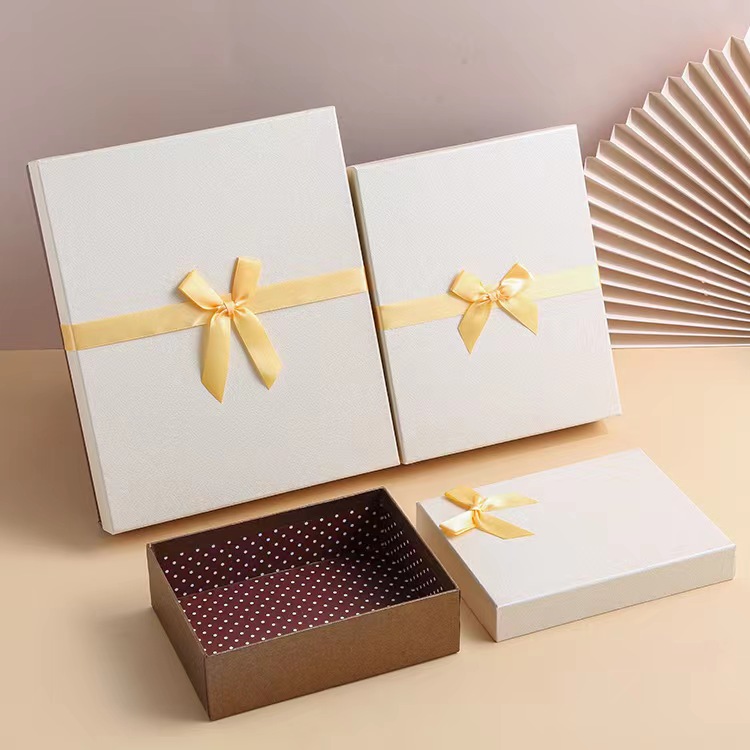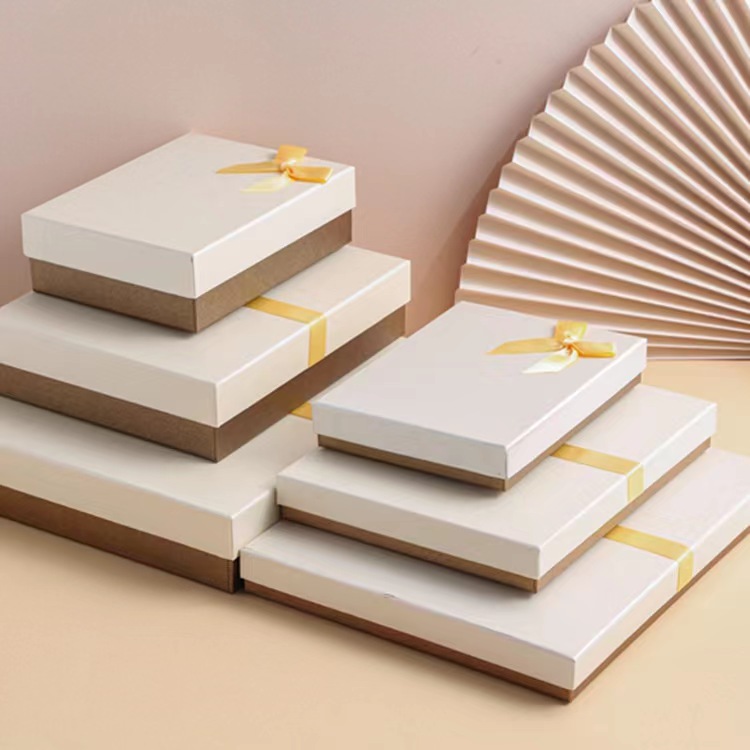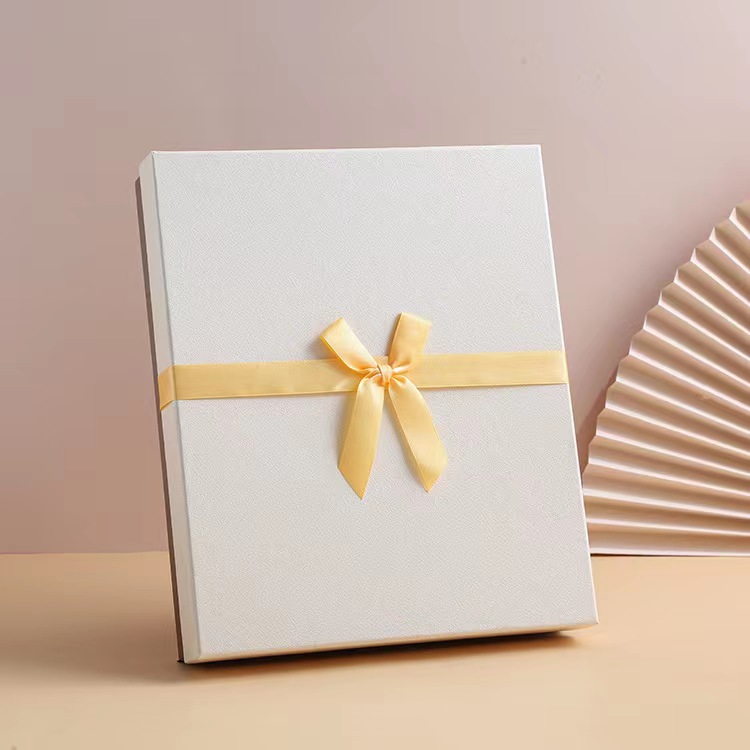Table of Contents
Rigid box packaging is a favored choice for specific products due to its exceptional structural support and a touch of opulence. It is often synonymous with set-up boxes, premium packaging, or high-end solutions due to its substantial weight and elevated cost. In this article, we will embark on a comprehensive exploration of this packaging, delving into its composition, advantages, disadvantages, and showcasing some notable examples for your consideration.
 What Are Rigid Boxes?
What Are Rigid Boxes?
Custom rigid boxes represent robust paper-based packaging comprised of high-density chipboard, typically measuring 2-3mm in thickness, adorned with decorative specialty paper. As previously mentioned, they are commonly known as set-up boxes or premium packaging because of their luxurious appearance and texture, making them a perfect match for items like board games, luxury goods such as jewelry, or gift items.
Furthermore, these bespoke boxes provide a premium unboxing experience, allowing for enhanced opportunities to establish a compelling brand narrative. They offer a multitude of branding possibilities through printing and finishing techniques, including:
- Hot stamping
- Embossing and debossing
- Various coatings
- Ornamental elements
Understanding the Distinction Between Flexible, Corrugated, Folding Cartons, and Custom Rigid Boxes
If you’ve been researching alternative packaging options for your product, you’ve probably come across terms like rigid box packaging, corrugated boxes, and folding cartons. While the differentiation between flexible and rigid box packaging is evident from their names, corrugated and folding cartons may require a closer look. To ensure you have a comprehensive understanding of each option and their differences, let’s provide a brief overview.
In the realm of packaging, rigid box packaging stands out for their robust construction, solid support, and their pronounced luxurious appeal. These boxes are constructed from thick chipboard and are designed to maintain their shape, in contrast to flexible packaging, which easily bends and flexes.
Distinguishing between the other options becomes a bit more nuanced. Rigid boxes are often considered a class apart, primarily due to their premium presentation. However, alternatives gaining popularity include folding carton boxes and high-quality corrugated packaging, renowned for their cost-effectiveness and adaptability in achieving high-quality printing and finishing. To grasp the distinctions more clearly, let’s delve into the details.
The chart above illustrates that while these options share similarities, the choice of packaging solution ultimately rests with your specific needs and preferences. If you wish to explore additional alternatives, please consider reading more about folding cartons or corrugated packaging. However, if you believe that this option aligns with your requirements, let’s press on.
 Varieties of Custom Rigid Box Packaging
Varieties of Custom Rigid Box Packaging
It comes in two distinct styles: partial finish and full finish. Partial finish involves a partially completed wrapping and chipboard. The wrapping exclusively covers the outer surfaces of the box, while the inner chipboard remains exposed. In this option, a single piece of chipboard with perforated crease lines is utilized for folding and wrapping without an additional outer layer that would conceal the kraft or grey chipboard material. This choice is favored for its efficiency in production, as it requires fewer materials during construction.
Conversely, full finish packaging leaves no chipboard exposed; the wrapping extends across the entire box. This method employs a thicker 2-3 mm chipboard, and the inner chipboard is divided into separate sections for each side of the box. Lamination can also be incorporated, offering various finishing choices based on your needs. Additionally, full finish packaging incorporates an extra layer of wrapping, typically white by default or customized with printing. So, in Summary,
Partial Finish:
- Wraps only the inner edge of the box
- Inner chipboard is unfinished and visible
- Utilizes a single piece of chipboard with perforated crease lines and folds
- Optional use of tape to secure the chipboard before wrapping
- Chipboard finish can be coated on one side with white or kraft.
Full Finish:
- Completely wrapped with no exposed chipboard
- Inner chipboard is divided into pieces for each side of the box
- No need for tape before wrapping
- Employs thicker chipboard (or greyboard) at 2-3 mm thicknesses
- Provides laminated options with various finishes.
How are these rigid boxes created
To simplify the construction of these high-end rigid box packaging, we’ve broken down the process into four straightforward steps that are applicable to both options:
- Sizing – The box starts as a flat paperboard, which is initially cut and scored to the correct dimensions.
- Folding – The paperboard is then folded and securely fastened to create the base of the box.
- Printing – A design is printed onto the wrap and subsequently laminated. Additional enhancements can be included as desired. The wrap is then affixed to the shape of your box.
- Wrapping – The wrap is tightly applied to cover your box, and the process is complete!
Popular Styles of Rigid Boxes
Diverse High-End rigid box packaging not only offer two distinct types but also a plethora of style choices. Here are some popular options:
Tube or Rolled-Edge Tube Packaging: This cylindrical packaging can be telescopic or feature a shoulder-neck opening, making it suitable for beverages, cosmetics, accessories, and snack containers like Pringle’s cans.
Magnetic Closure Boxes: These boxes come with two robust magnets that effortlessly seal the box, adding a touch of luxury to jewelry and retail products. They are not only secure but also collapsible for convenient storage.
Drawer Style Boxes: As the name suggests, these boxes open like drawers and are also known as slipcases, slides, or matchboxes.
Book Style Boxes: These boxes open like a hardcover book, lending a sense of creativity and innovation. They can have straight or rounded spines and can even incorporate magnetic closures for a luxurious touch.
Shoulder Neck Boxes: Featuring multiple layers, including a distinct inner layer for the lid to rest on, these boxes provide a unique unboxing experience and can be customized to match your brand’s aesthetics.
Inserts to Complement Your Style
While the style options for rigid box packaging is virtually limitless, once you’ve decided on your preferred type, the next consideration is the choice of inserts. Additional packaging materials like box inserts are highly recommended to enhance the unboxing experience.
Custom packaging inserts are tailored to fit your product precisely, ensuring it remains secure while offering excellent shock protection, even against drops and rough handling. These inserts are typically available in various materials, including paperboard, corrugated, molded pulp, foam, and plastic.
Advantages and Disadvantages of Rigid Box Packaging
Disadvantages of Rigid Box Packaging
Now that we’ve explored the various design possibilities, the question arises: Why opt for this particular packaging solution? Well, beyond its sturdy and protective build, rigid box packaging offers an elusive, opulent, and robust appearance and tactile experience that outshines most other packaging types.
Often complemented by a custom insert, this packaging not only safeguards products against rough handling but also promotes reusability. Customers tend to retain these boxes rather than disposing of them after unboxing a product. With these merits in mind, rigid packaging boxes become an integral component that augments your product, adding significant value to your brand. When your product is elegantly encased in a rigid box, customers no longer perceive it as a stand-alone item; instead, they view the packaging and product as a cohesive set.
It’s only natural for people to relish gifts, and rigid gift boxes presently represent the pinnacle of gift-style packaging. However, like any packaging option, there are inherent drawbacks. While the rigid box packaging is exceptional for small to medium-sized products, its resilience tends to diminish when dealing with extra-large sizes. Larger boxes are more susceptible to torn edges due to the heightened load on the outer wrapping paper. Hence, it is advisable to utilize thicker paper with a laminated finish to enhance durability for larger packages.
Nonetheless, the most significant drawback of high-end custom rigid boxes is their cost. To be candid, crafting one of these boxes comes at a premium.
The production process for these upscale packages differs significantly from other packaging styles. Much like wrapping a gift, custom rigid boxes are meticulously formed by enveloping paper around solid boards. Each chipboard is individually bonded, and the production of these boxes involves an extended process that may take 1-2 weeks longer than alternative packaging methods.
Presently, most production processes for this type of packaging entail some degree of manual assembly and meticulous quality checks to identify defects and uphold quality standards. This results in a cost that can be up to three times higher than that of folding cartons and corrugated packaging.
While the elevated cost is easily justifiable for established brands, as luxury packaging bolsters the perceived value of both the product and the brand, we acknowledge that smaller companies often face budget constraints. For this reason, we invite you to explore our other article on creating cost-effective luxury packaging, which provides insights into cost-saving strategies for rigid boxes and alternative options.
